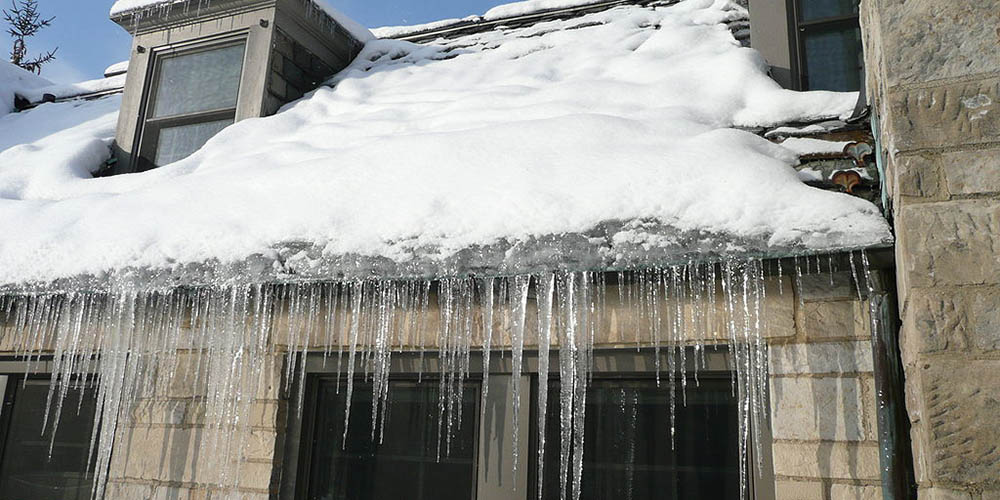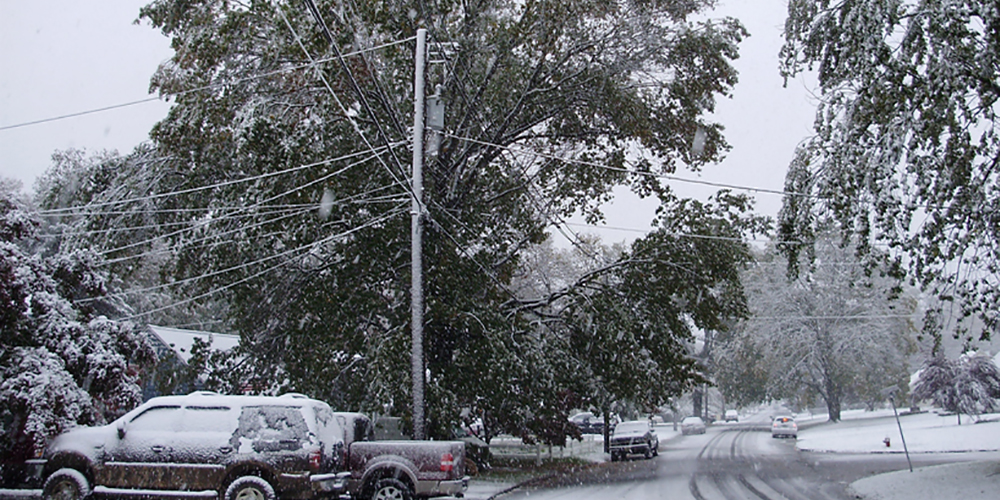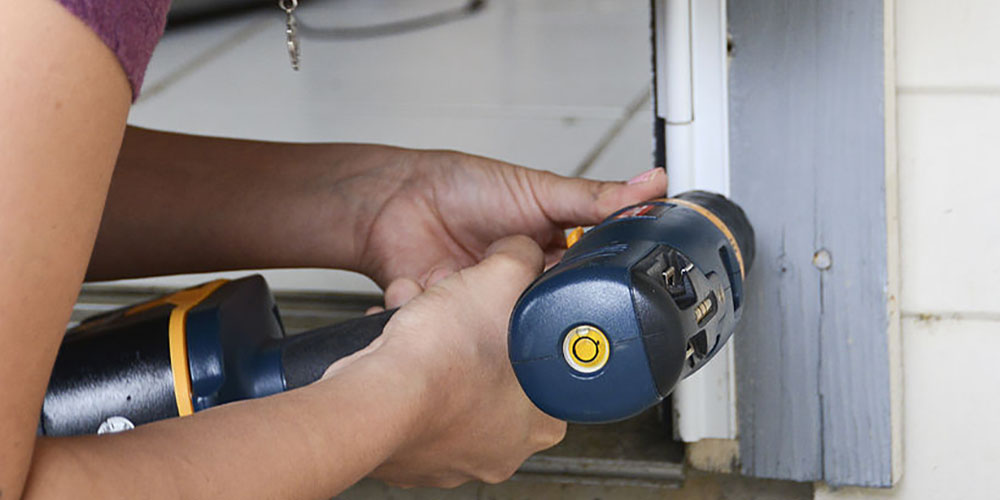In our previous article, we covered the important tasks related to winterizing your car. Now that your car is winterized and you’re ready for winter travel, it’s time to turn your attention to the larger task of winterizing your home. In many ways, preparing your home for winter is more important than winterizing your car. Why? Because you can save a good amount on energy costs and keep those pesky home maintenance costs down, and while saving money is great, skimping on winterizing your home could lead to expensive and unwanted insurance claims. So in addition to getting good homeowners coverage, let’s get out the ladder and some work gloves and discuss some home winterizing tips.
Home Winterizing Musts
There is a long list of things you can do to prepare your home for winter, and while it may seem overwhelming, just remember to knock out the big items first and then move on to the lesser items when you have time.
Clean Out The Gutters
Cleaning out your gutters is one of the first things you should do when you begin winterizing your home. The fall has brought a lot of extra leaves and gunk to your gutters and downspouts, and you’ll want those gutters free flowing by the time the first heavy snows begin to hit. Remember to wait until the majority of the leaves have fallen or clean your gutters more than once this fall to ensure they are ready for winter. The best and safest way to clean gutters is with a ladder.
Ice Dams
There are two main reasons why you’ll want clean your gutters for winter. The first is to combat the formation of ice dams. An ice dam is a mass of ice that usually forms at the edge of your roof in winter. Since Colorado experiences frequent warming and freezing spells throughout the winter, ice dams can be a real problem for some homeowners. Once a thick patch of ice has formed at the bottom of the roof, melting water can become trapped or “dammed” between the ice and the roof.

As the water pools on your roof, it can create extra strain on the integrity of the roof or even cause water to leak into the interior of your home. Ice dams can also damage gutters as well as the shingles on your roof, and in some circumstances, ice dams can break free and damage you or your neighbor’s property. Do yourself a favor and avoid the potential insurance claim by cleaning your gutters and monitoring for ice dams after big snows and melting periods. If you find that your house has frequent ice dams, you’ll need to address and fix the insulation in your roof.
Icy Sidewalks
As you clean your gutters, you’ll want to check for damage in both the gutters and the downspouts. If water is not moving correctly through your gutters, it could be pooling on nearby sidewalks, and with the regular cycle of thaw and freeze in Colorado, that could mean unexpected injury for you or your guests. Even a clogged gutter can sometimes pool water on the sidewalk, and this is the other big reason to get everything cleaned out before winter.
Trim Nearby Limbs
Another hazard of winter storms can come in the form of dead or weak limbs that are near your home (or your neighbor’s home). Once the ice and snow falls on these limbs, they can break and crash down on your house or nearby cars. Before winter hits, be sure to check the trees on your property for suspicious limbs and trim all nearby dead limbs away from your house.

Give Your Furnace A Check Up
You’ll want to check in on your furnace before the colder temperatures give it a season-long workout. You’ll want to make sure the furnace is still operating efficiently so it doesn’t cost you a ton of money, and if you’re not sure, you can always bring in a technician to give it an inspection. Next, you should verify that all the cold air returns are open and unobstructed as the furnace needs these to operate correctly. Finally, the biggest and yet easiest impact you can make on your furnace is to change the filter every 3 months or so.
Seal Your Windows And Doors
There are a variety of methods to keep cold air from leaking into your windows, but first you’ll need to evaluate the condition of your current windows. Old windows can be a huge burden on your furnace and your wallet, and you can save a ton just by updating your windows to modern, energy efficient models. Aside from replacing your windows, you’ll want to check for drafts on both sides of the window trim and caulk around the edges to ensure a tight seal. If these methods aren’t sufficient, you can always seal the window off with clear plastic.
When it comes to winterizing your doors, first check the trim similar to what you did with the windows and caulk any areas that may create drafts. Next you should check the weather stripping on the door and make sure it is still intact and doing its job. If it looks torn or damaged, you can replace it without spending a lot of money in the process. Installing a storm door on the outside is another good way to create a better seal and stop cold air from coming into your home. Finally, pay attention to the gap under the door. If you feel a draft coming from that area, either install a professional draft guard or use a homemade one when you’re not using the door.

Insulate Water Pipes
The final major project you can do to get ready for winter is insulate your water pipes. Hot water pipes can be wrapped to increase their efficiency, and cold water pipes can be wrapped to prevent them from freezing. Frozen pipes can be an especially devastating occurrence in winter, and you’ll want to pay special attention to this problem. Areas where pipes are especially exposed like cold basements or garages should be monitored and wrapped for insulation. Inside your home, it is best to keep your thermostat at 68 or above to keep pipes from freezing. Outside your home, all outdoor faucets should have covers on them, and you’ll want to disconnect garden hoses before the first freeze of the season. You can also keep indoor plumbing from freezing by leaving the cabinet doors under the sink open.
Home Winterizing Extras
With the big jobs done, here’s a list of extra tasks and winterizing tips you might consider throughout the winter:
- Program your thermostat to a lower temperature while you’re away at work and then have it warm up an hour or so before you arrive home.
- Reverse your ceiling fans to winter mode to push hot air back down into the room.
- Make sure your curtains and blinds are open during the day to gather extra heat (this is especially important for south facing windows).
- Clean your indoor furnace vents to maximize air flow.
- Make sure your dryer vent closes or is designed to keep cold air from flowing back in when not in use.
- One last insurance specific tip: clean your sidewalks after snow and ice storms to keep you and your guests from slipping on them.
Image one, two, three, and four courtesy of Wikimedia Commons.

